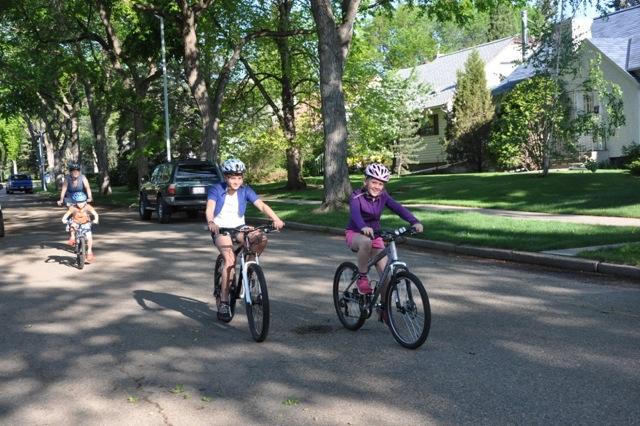Physical activity is recommended for improving or maintaining your health. It is associated with a lower risk for chronic disease, including cardiovascular disease, diabetes, obesity, high blood pressure, depression, anxiety and some types of cancer. (1) In addition, recent research has shown that physical inactivity or sedentary time is associated with higher risk for some of these same diseases, independent of physical activity levels. (2) In the media, we have seen the idea that “sitting is the new smoking”
Canadian adults aged 18 to 79 spend an average of nearly 10 waking hours per day sedentary. (3) Therefore rather than just ensuring we get some regular exercise (150 minutes per week according to the guidelines), we need to try to decrease the time we sit during the day. (4) A 2010 study in the American Journal of Epidemiology tracked 123,000 adults over 14 years and found that people who sat more than six hours daily had an 18 percent higher mortality rate than those sitting less than three hours. (5)
In order to overcome this trend of sedentary behaviour many people are turning to technology. As I have discussed before, electronic physical activity trackers are very popular. See my blog post – https://changehealth.ca/physical-activity-trackers-encourage-family-fitness-and-fun/
So where does the 10,000 steps come from. The origins of the 10,000-steps recommendation are not actually scientific. According to Catrine Tudor-Locke, director of the Walking Behavior Laboratory at Pennington Biomedical Research Center in Baton Rouge, pedometers sold in Japan, were marketed under the name “manpo-kei,” which translates to “10,000 steps meter”. Since then many research articles have supported the health benefits of achieving 10,000 daily steps. In 2012, Tudor-Lock published the following recommendations.
We recommend that adults avoid averaging <5,000steps/day and strive to average ≥7,500steps/day, of which ≥3,000 steps (representing at least 30 min) should be taken at a cadence ≥100 steps/min – Dr Tudor-Locke (6)
Often our schedules are busy – family, work, extracurricular activities – placing exercise and health to the bottom of our priorities. If we placed activity and exercise into our daily routines, perhaps we could achieve our goals of 10,000 steps through our commute between the house and work; between school and home; as we complete errands.
In modern urban design, the focus is on walkability, bikeability, healthy modes of transportation to create healthy communities. There is a growing focus on designing communities and cities with active transportation models in mind.
Watch these video clips for more information
Gil Penalosa – 8-80 cites: www.youtube.com/watch?v=jQWWhnjNUtc
Jeff Speck – The walkable City: www.ted.com/talks/jeff_speck_the_walkable_city
Urban design leaders like Jeff Speck, Brent Toderian, Gil Penalosa, amoung many others who stress the change needed in modern cities towards creating pedestrian friendly, bike friendly spaces. Gil Penalosa, founder of 8-80 Cities, talks about city design that focuses on healthy modes of transportation and design that are suited for the eight year old to the eighty year old. Creating healthy, safe active transportation corridors for all ages, encouraging young families to be active and seniors to age-in-place.
The Department of Family Medicine at the University of Alberta, Community Engagement office, City of Edmonton and Paths for People have invited Mr. Penalosa to speak at A City for Life in Edmonton on Friday, April 15th at the University of Alberta. Mr. Penalosa is an engaging speaker, a leader in Urban Design, passionate about creating spaces for everyone, encouraging children and families to be active and allowing seniors to age-in-place. Tickets will be available through Eventbrite beginning mid-February. For additional information on Paths for People and A City for Life, visit the Paths for People website.
Check out the Paths for People website for more information about A City for Life to be held in Edmonton on Friday, April 15th 2016 at the University of Alberta
Tips for active transportation at your workplace or in your community.
- Take public transit
- Park farther away
- Use stairs not elevators
- Book a walking meeting
- Identify safe bike routes and share with others
- Purchase necessary equipment to make active transportation easier (i.e. bike racks)
- Rally work staff or students to participate in a walk to work or bike to school day
- Organize a bike club, plan rides, or create an events to encourage your neighbours to ride
- Develop a rewards program, where those who use active transportation are recognized for their effort
References:
- Warburton D. ER, Charlesworth S, Ivey A, Nettlefold L, Bredin SSD. 2010. ‘A systematic review of the evidence for Canada’s Physical Activity Guidelines for Adults’. International Journal of Behavioral Nutrition and Physical Activity, vol. 7, no 39.
- Tremblay MS, Colley RC, Saunders TJ, Healy GN, Owen N. 2010. ‘Physiological and health implications of a sedentary lifestyle’. Applied Physiology, Nutrition, and Metabolism, vol. 35.
- Statistics Canada. Canadian Health Measures survey 2007-2011. http://www.statcan.gc.ca/pub/82-625-x/2013001/article/11807-eng.htm Accessed Jan. 14, 2016.
- Canadian Society for Exercise Physiology. 2011. Canadian Physical Activity Guidelines. Ottawa, ON, www.csep.ca/guidelines. Accessed Jan. 14, 2016.
- Patel et al. Leisure Time Spent Sitting in Relation to Total Mortality in a Prospective Cohort of US Adults. Amer J Epid aje.oxfordjournals.org/content/172/4/419.full
- Tudor-Locke, Schuna J. Steps to preventing type 2 diabetes: exercise, walk more, or sit less?. Frontiers in Endocrinology. 3:142, 2012.
Thanks to Anna Ho for helping write this post. Photo Credit: D Klein
